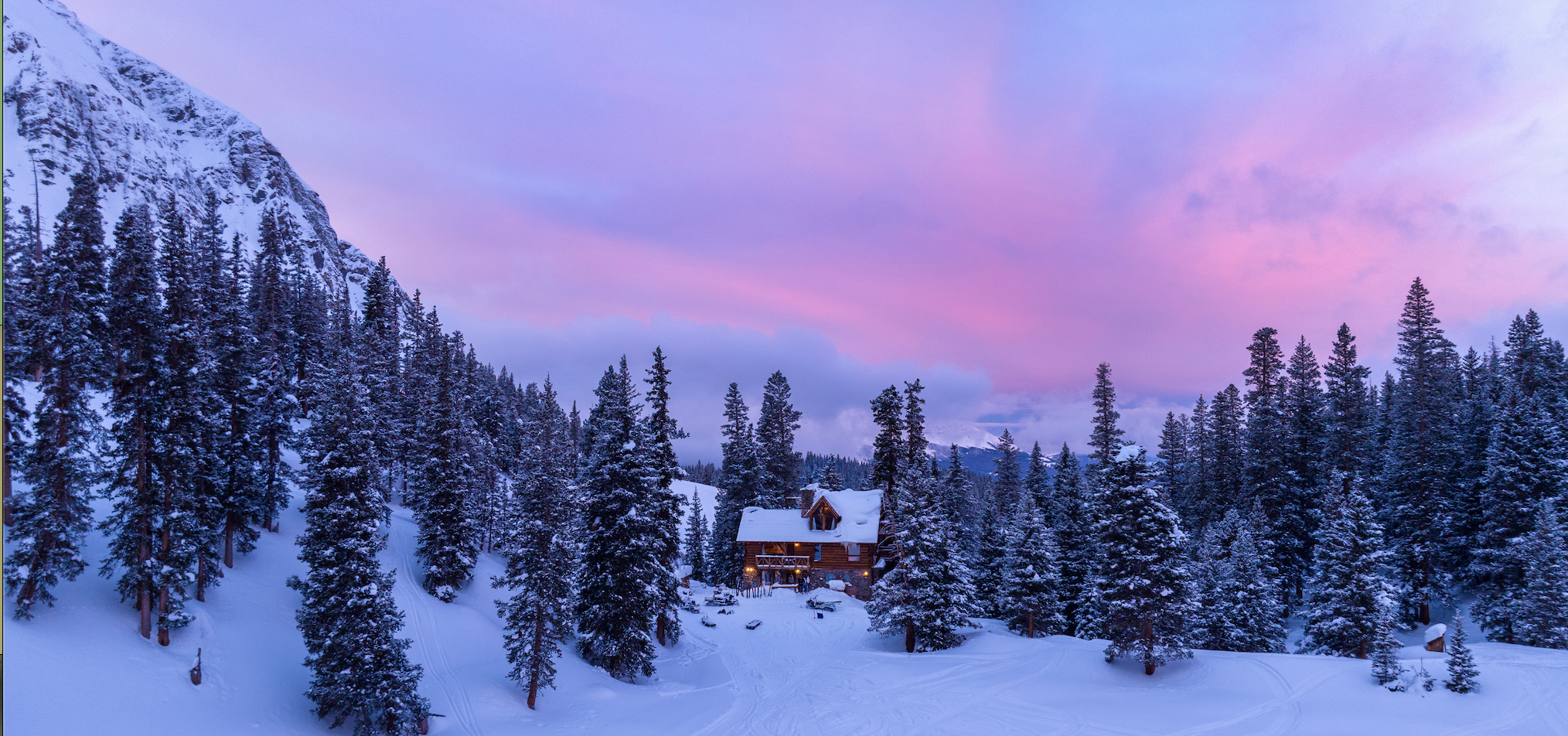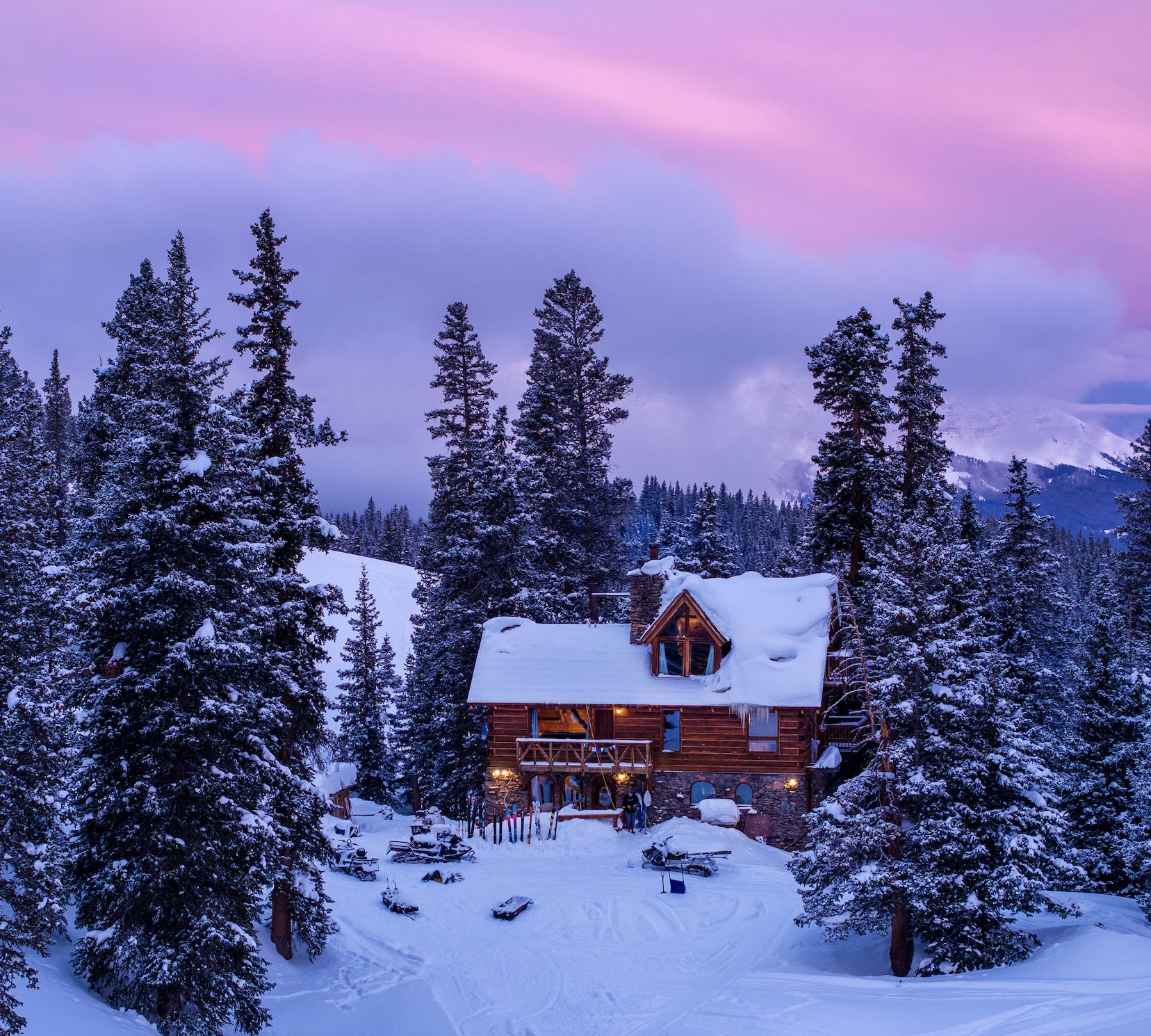Beautiful Place, Captivating History: Alta Lakes
By Ellen Metrick
Photos By Brett Schreckengost
For an enchanting combination of rugged beauty and captivating history, it’s hard to beat Alta Lakes. It’s a sentiment shared by a number of area residents who are preserving and sharing this place, which encompasses the ruins of the old mining town of Alta, a trio of lakes and relics from the region’s mining heyday.
Located above 11,000 feet south of Telluride and Mountain Village, off Highway 145, Alta Lakes can be accessed in the winter by guided snowmobile, skis or snowshoes. Visitors nowadays will notice the ruins of the handful of buildings that were once part of the town of Alta en route to the lakes. In the late 1800s and early 1900s, Alta had a population of 300, a community center, school, boarding house and homes for miners and their families. The houses on adjacent “Snob Hill” belonged to the bankers and mine owners who literally oversaw the town and operations of the mines.
Michael Doherty is the owner of Telluride Outfitters, a year-round guide service that leads snowmobile tours to Alta Lakes in winter. He is one of the folks who knows and loves the area and says, “Sure, it’s fun to snowmobile, but also to share this history. There is a lot that makes this place what it is and why Alta is worth preserving and worth visiting.”
Long before the arrival of humans to the region, though, there were eons of seas and uplift, ice ages, volcanoes and earthquakes. Doherty and his guides know these layers and love to talk about them — of silver and gold arriving from exploding stars as Earth was forming and the 30 million years of intense volcanic activity that brought those precious metals to the surface. Fast forward and you have miners in the late 1800s kicking up gold and silver with their boot-toes. “The geomorphic upheaval of the San Juan Mountains and the formation of the Silverton Caldera are really important to this area,” Doherty remarks. By the late 1870s, the first mining operation, Alta Mine, had opened, followed by Gold King Mine. Trees quickly fell to the axes of industry and, by 1890, Gold King was near closure due to a lack of wood to fuel the steam-powered mill necessary for processing ore. That’s when invention answered need, leading to a particularly interesting time in local history as one of the owners of Gold King, Lucien L. Nunn, collaborated with George Westinghouse and Nikola Tesla to use alternating current electricity to power the mill. The development — the first-ever commercial use of AC electricity in the world — is said to have saved the mines and the town. Things hummed along for more than 50 years before a fire and general decline in the mining industry emptied the town and silenced the mines in the 1940s.
The next chapter in the story of Alta Lakes began in the early 1970s when local Jim Russell fell in love with the place just south of then-brand-new Telluride Ski Resort. Over the next several years, Russell, wife Sally and friends built what came to be known as the Alta Lakes Observatory. Today, the sturdy backcountry lodge still sits on the southwest tip of the most remote of the lakes. A unique, off-the-beaten-path accommodation available for rental, the property is now owned by the Bowling brothers, Michael, Mattie and Dan, who purchased it from Russell in 2011. There’s room for up to 12 people to sleep comfortably, cook, ski and enjoy the dark skies. Of Russell, Mattie Bowling says, “One of the coolest things he did was to create a culture of ‘help out to hang out.’ Us buying the place was serendipitous, a once-in-a-lifetime opportunity, and we’re proud to carry on the Russells’ tradition of sharing it with everyone.”
Adds Michael Bowling, “We’re the caretakers for the spirit and the soul of the observatory.”
Part of that caretaking involves making sure the lodging is ready for guests to enjoy. Nicole, Michael’s wife, handles reservations and Mattie is on the ground, ensuring guests have a comfortable stay and ferrying them to the ski resort via snowmobile to a backcountry gate. In the winter, says Michael, it’s not unusual to find lynx tracks in the snow around the lodge. Pine martens, short-tailed weasels, snowshoe hare and porcupine all hang out in winter, too. Clark’s nutcrackers are common birds, and occasionally visitors see eagles, hawks and owls.
Noting that “There’s so much cool stuff here,” Doherty emphasizes that local knowledge is key to enjoying the area, in particular regarding weather, snowpack and the ins and outs of accessing National Forest and private land.
“It’s a very backcountry experience,” he says.



